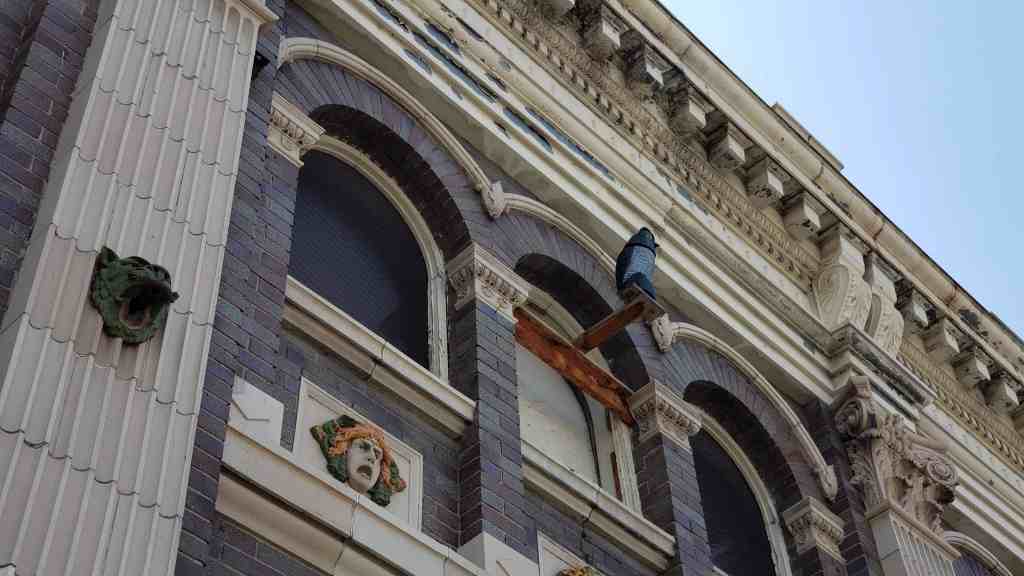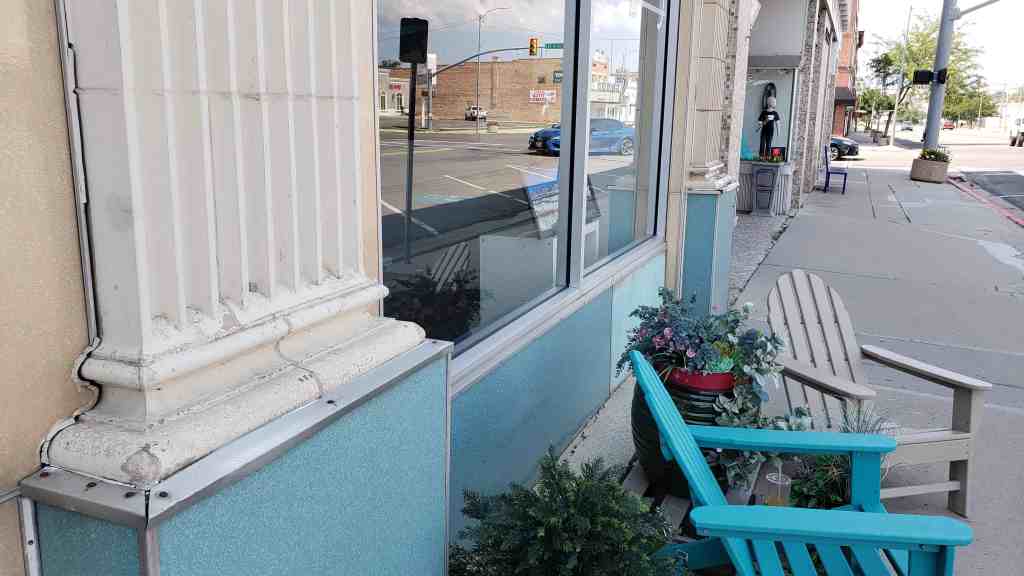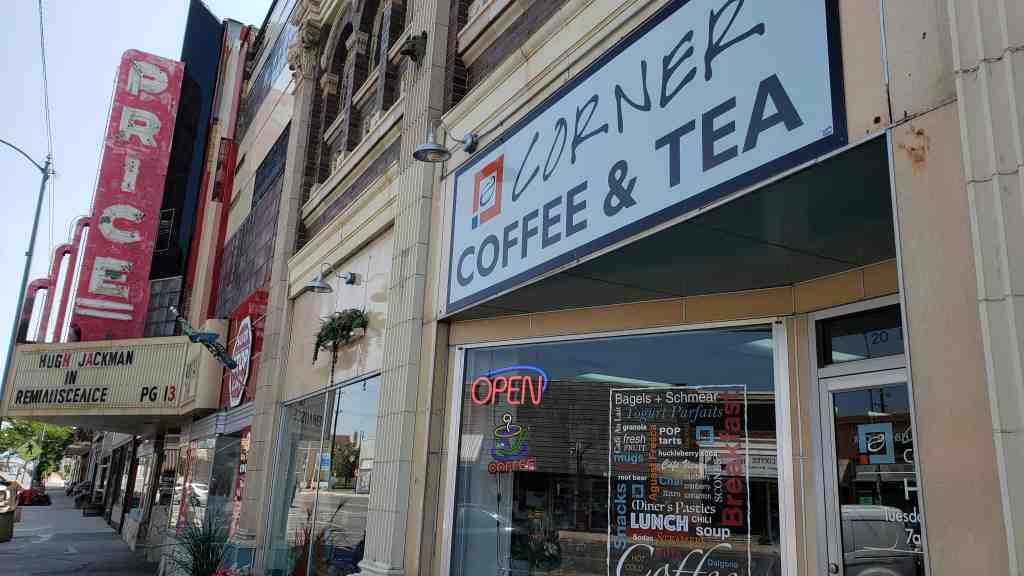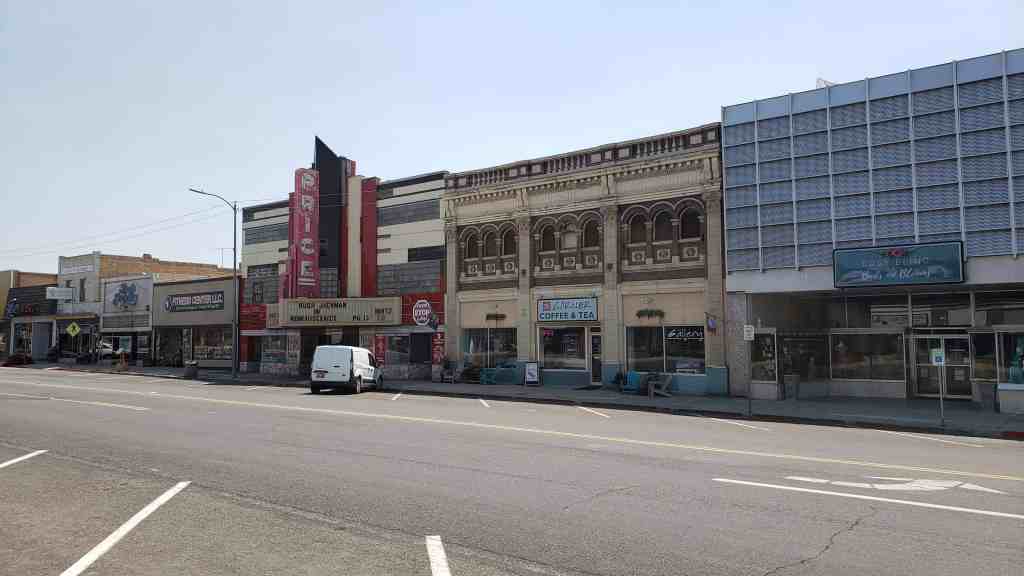Tags
1920s, Carbon County, Greek, Historic Buildings, historic theaters, NRHP, Price, Theaters, utah
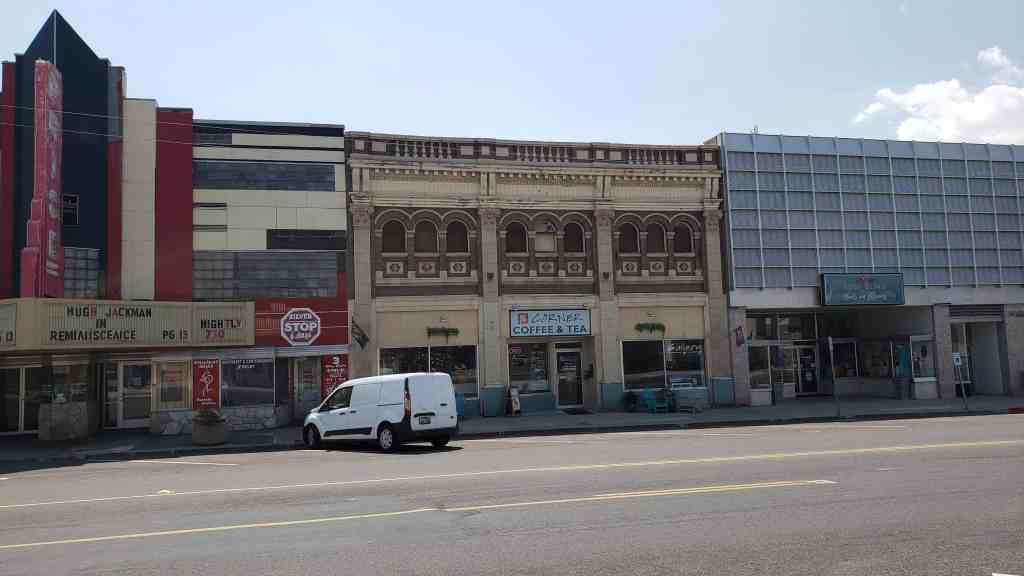
Star Theatre
The Star Theater was built in 1923-24 for the Georgedes brothers: Pete, Angelo, Charlie, George and Harry. Natives of the Greek island of Mytelene, the Georgedes brothers immigrated to the United States and by the early 1920’s had become successful businessmen. The theater was designed by architect J. A. Headland of Salt Lake City. The architectural features, with Corinthian columns and second story masks representing figures from Greek Theater, reflect the Greek heritage of the original owners. In 1964, the building was acquired by Duane and LaVern Steele, and later acquired by Curtis Steele and Scott Sjostrom in 1985.
Related:
Located at 20 East Main Street in Price, Utah and listed on the National Register of Historic Places (#82004116). The text below is from the nomination form from when it was added to the register.
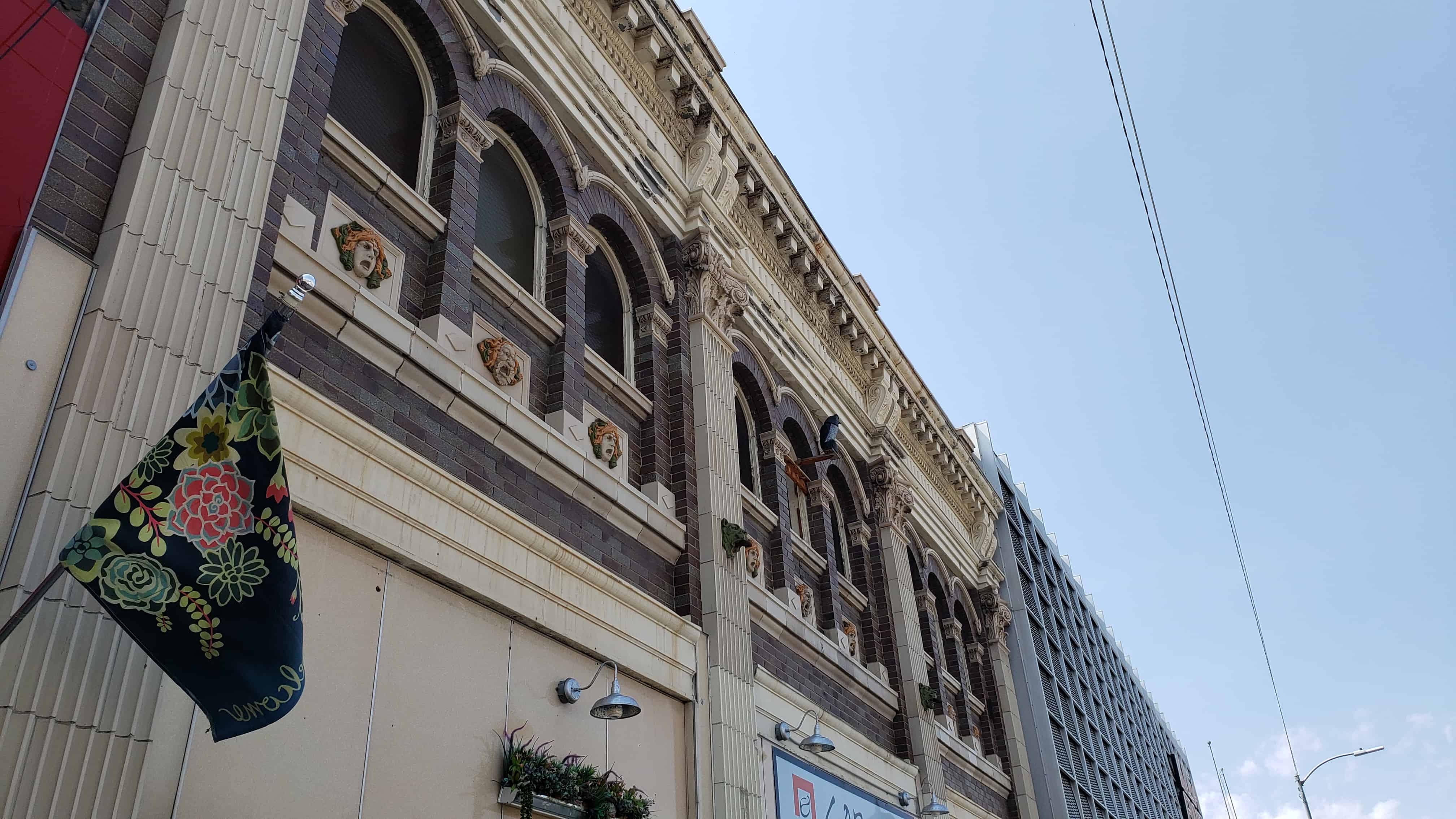
ent of Significance (in one paragraph) The Star Theatre built in 1923-24, is an extremely fine symbol of Greek immigrant success in America. The building’s facade contains many design elements derived directly from Greek theatrical tradition, and the solid construction and central location of the structure are emblematic of immigrant accomodation to new surroundings. In addition, the building is significant as an outstanding and well preserved example of the Classical Revival style in a small commercial building in Utah.
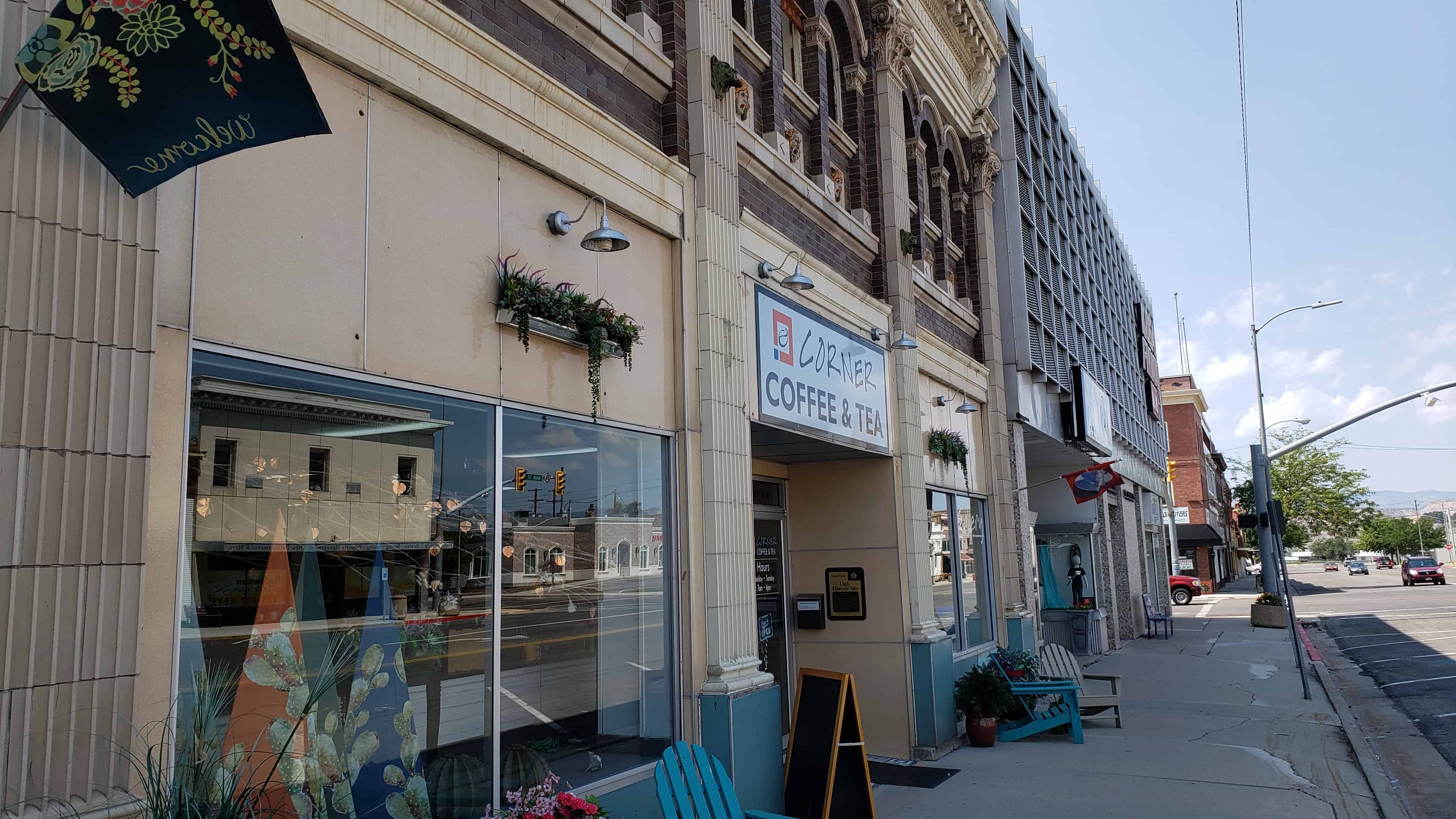
The Star Theatre, later called the Carbon Theatre and now Office Equipment was built in 1923-24 by the five Georgedes brothers: Pete, Angelo, Charlie, George and Harry. They took great pains to insure an attractive, substantial building for the beautification of Price and the hope of its future expansion. After purchase of the land from Frank Grosso et. al. in 1923, they concluded party wall and right-of-way agreements with P.O. Silvangi, whose building abuts on the right. They hired a Salt Lake architect, J.A. Headlund, to “furnish designs, plats, plans, specifications, drawing, and superintendence” for construction of the theatre for 4% of the cost of the building, which equaled $2,267.311 (This fee means that the building itself cost $56,682.75, exclusive of the land. Pete Georgedes estimated the entire cost of land, structure and equipment at $70,000, 2 a very substantial investment for a building at that time.) The Georgedes family retained possession of the theatre until 1964, when they sold it to the present owners, Duane W. and LaVern Steele, who converted the building to the present retail use.
The Star Theatre has retained many features that contributed to its permanence and attractiveness. First, the Georgedes Brothers insisted on a strong foundation and thick walls. In the early 1920’s Price was in the grip of Booster Fever, and the brothers reasoned that as Price grew, they could build another story on top of their theatre to expand its uses. However, this idea never materialized.
The theatre’s most outstanding feature, for which the Georgedes Brothers were directly responsible, is its impressive façade. As Greek immigrants less than two decades in America, the Georgedeses wanted an architectural style that reflected their homeland and its ancient theatrical tradition. They chose the Corinthian, the most ornate of the Greek architectural styles, for the columns on the front elevation. The masks on the second story represent muses, or figures from Greek theatre, from dramas they had seen performed in their homeland. One of the brothers, George, made several trips to Denver to oversee the actual production of the theatre façade. The elegant front elevation itself, with its direct connection to the ancient traditions of the land of its original owners, is reason enough for this building’s nomination to the National Register of Historic Places.

Even the name of the theatre was not idly chosen and revealed traditional Greek attitudes. The men consulted the Greek Orthodox priest, Father Smyrnopoulos, the leader of the immigrant Greek community. He suggested the name “Star”, as he said that everyone saw the stars in the sky so it was a name that would appeal to all people. 3 The sign for the theatre, already commissioned, was changed from “G.B.(Georgedes Brothers) Theatre” to “Star Theatre” and a lyre, another ancient Greek symbol, was added to the marquee.
In addition to its architectural features, the importance of the Star Theatre derives from its role in the life of eastern Utah. It was the second theatre to open in Price, providing increased recreational opportunities. From its inception the theatre was used both for moving pictures (originally silents, especially the popular cowboy films with William S. Hart or Tom Mix) and for live theatre productions. Two types of troupes performed in the original Star Theatre: traveling burlesque and theatrical companies and local thespians. The traveling companies were hired by the theatre’s manager; the building was let free of charge to local groups as a community service. The theatre was equipped for many types of live performances judging from the scenery purchased by the Georgedes Brothers. These included one fancy drop curtain and one pair of heavy drapes, scenery for a fancy parlor, a rustic kitchen, a garden, a light wood (as opposed to a dark wood), a modern street, one set of rocks, two sets of balustrades, foliage and other borders, in addition to the movie screen. ^ Many of these sets and the movie screen could be “flown,” ie. raised by a cable and pully system into the empty second-story space at the rear of the building above the stage. For this reason, the only second-story rooms were in the front of the theatre.
The Star Theatre, although owned by the Georgedes family, was managed by others. The Georgedeses first rented it to Mr. Littlejohn, who also ran the theatre in Helper. A later manager was Charles Huish, who renamed it the Carbon Theatre. When he died, Pete Georgedes’ daughter, Mary, and her husband, Joe Santi, took over the building’s management. They ran it until the building was sold, a second generation to be involved in the commercial success of this building.

The Star Theatre is a two-story flat roof brick building whose façade is an outstanding example of the Classical Revival style which was a common stylistic choice in twentieth century commercial architecture in the early decades of the twentieth century. Elements of that style include: fluted pilasters with Corinthian capitals; bands of round arch windows; an elaborate entablature with modillions on the cornice; egg and dart molding and dentils on the frieze and an architrave; and a parapet.
The façade is divided vertically into three bays by four fluted pilasters which have Corinthian capitals. Horizontally the building is further divided into three sections by floor, a broad cornice making up the third section. The first floor is unremarkable architecturally, consisting of show windows which probably reflect a major alteration made in 1964 when the theatre was changed to a commercial establishment. On the second story there are three round arch windows per bay accented with concrete moldings which contrast with the plum colored brick of the theatre. The piers of the window openings have capitals with egg and dart molding and simple bases. Cast masks which harken to the original purpose of the building are set into panels below each window. There is also a cast iron mask set into each of the two central pilasters at the second story level. The cornice of the building is divided into two sections: an elaborate variant of a Corinthian entablature; and a parapet with a blind balustrade. The entablature has an architrave with three fascia, a frieze ornamented by evenly spaced projecting vertical lines and capped by dentils and a band of egg and dart molding, and a cornice complete with modillions. The division of the façade by the Corinthian pilasters is continued in the entablature by monumental pairs of brackets which rest on the architrave above each capital.
The façade of the theatre above the ground floor appears to be unchanged except perhaps for the type of glass used in each of the round arch windows, and is well preserved.

